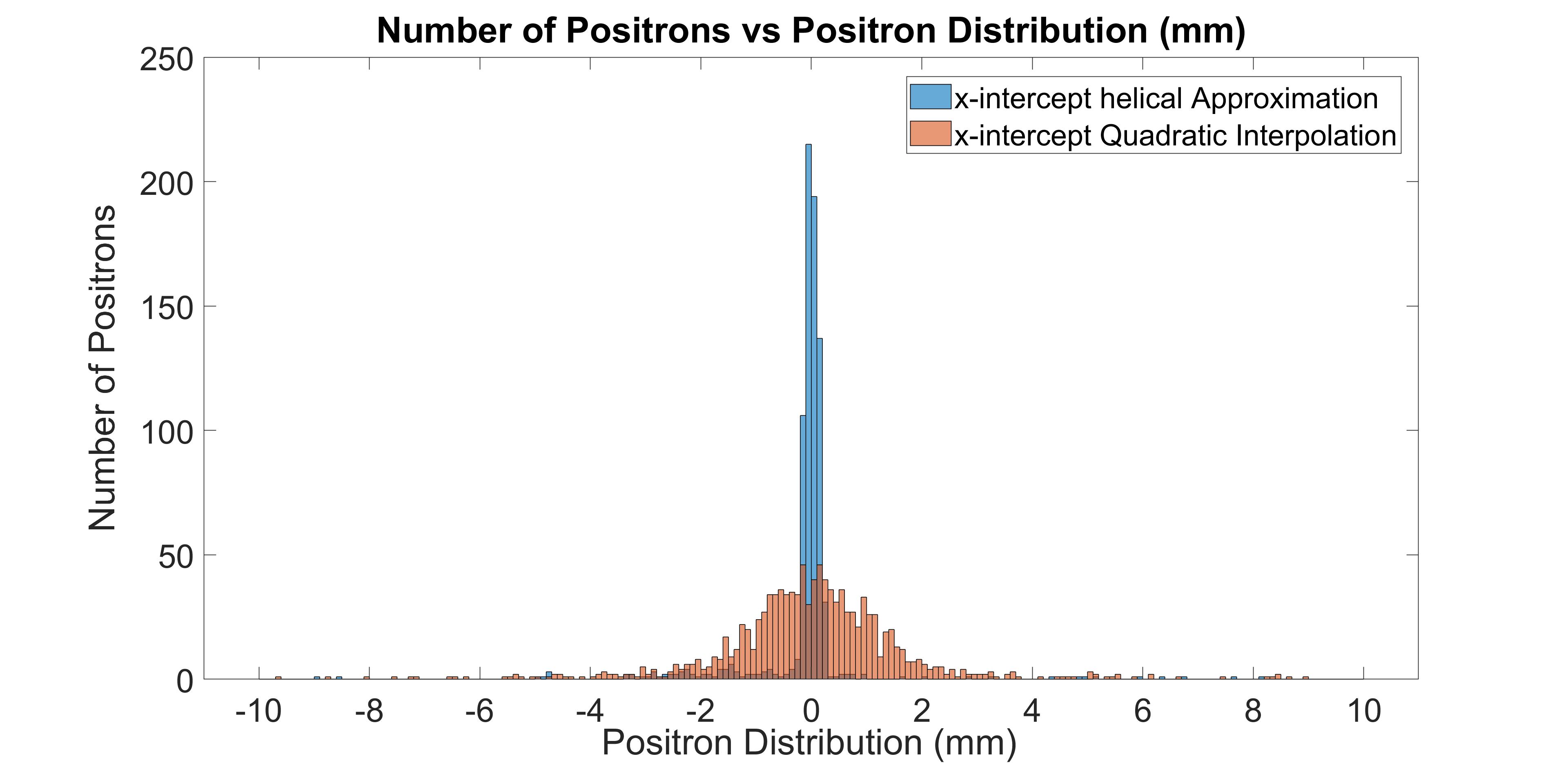Speaker
Description
We present a theoretical calculation for feasibility study of the Muon Microscope, which is intended to add positional resolutions within the sample by tracking down the positron trajectories to its source positions. In the presence of a magnetic field, any positrons whose trajectories have components which are perpendicular to the magnetic field will start to move in a helical path due to the Lorentz force. Taking special relativity into account, we have analytically determined the trajectories of the positrons in a uniform magnetic field. This solution serves as a guiding principle before going to a more realistic case, such as the distribution of the magnetic fields and positron scattering from the cryostat walls.
For the first step of the G4beamline simulation, we placed three virtual detectors (meaning they do not interact with the positrons) in the up stream direction at $z$=100, 150 and 200 mm from the sample respectively. When we apply a uniform magnetic field of 0.3 Tesla in the $z$-direction, the helical tracking analysis reproduces the source position with the accuracy of 0.3 mm in Full Width Half Maximum (FWHM). It is considerably more accurate than the quadratic interpolation method (FWHM=2.4 mm) as shown in Fig. 1.

Inclusion of the positron scattering from the cryostat wall and the inhomogeneity of the magnetic field will reduce the spatial resolution, and we will discuss them quantitatively from our G4simulation results from the realistic settings.
CY is grateful for the Erich Vogt First Year Student Research Experience (FYSRE) award from Department of Physics and Astronomy, the University of British Columbia.

